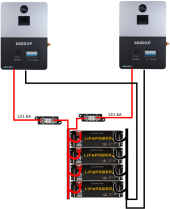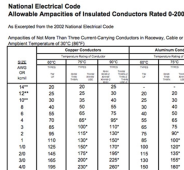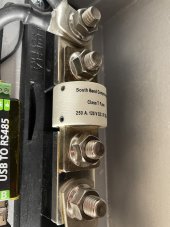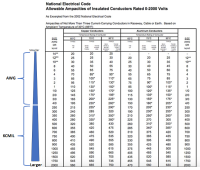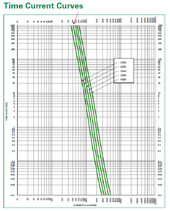JBoffgrid2022
New Member
- Joined
- Oct 28, 2022
- Messages
- 216
Hello All!
I have four EG4-Lifepower4 48v 100A batteries coming to me soon and I would love some advice on fuse sizing. I have done some research already and have found some are saying I will need a fuse, some say don't bother. If I don't need a fuse, great, I'll skip this step! But if I do, I would love some direction on sizing and placement of these fuses. I'll be using 1/0AWG battery cables connecting my battery bank to a bus bar. From the bus bar, I will use the same size cables going into both inverters. Thank you!!
My setup:
-(2) EG4 6000XP Inverters in parallel
-(4) EG4 Lifepower4 48v 100A batteries (wired in parallel inside of server box)
-1/0 AWG cables connecting server rack to buss bars, then bus bars to inverters
I have four EG4-Lifepower4 48v 100A batteries coming to me soon and I would love some advice on fuse sizing. I have done some research already and have found some are saying I will need a fuse, some say don't bother. If I don't need a fuse, great, I'll skip this step! But if I do, I would love some direction on sizing and placement of these fuses. I'll be using 1/0AWG battery cables connecting my battery bank to a bus bar. From the bus bar, I will use the same size cables going into both inverters. Thank you!!
My setup:
-(2) EG4 6000XP Inverters in parallel
-(4) EG4 Lifepower4 48v 100A batteries (wired in parallel inside of server box)
-1/0 AWG cables connecting server rack to buss bars, then bus bars to inverters



